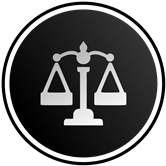Updated on July 22, 2025 10:55:37 AM
An individual or business producing goods related to embroidery, laces, false hair, hair accessories or haberdashery can secure their brand authority by registering their trademark under trademark class 26. Trademark registration is an essential component for a business that provides security and maintains the business identity.
Through this article, you can get complete information about trademark class 26 and the comprehensive list of items that cover TM class 26.
![TM-Devicemark[Sample]](../upload/TM-devicemark-Sample.png)
Trademark class 26 consists of all the products related to clothing accessories, lace, embroidery, false hair or its accessories and haberdashery items. The total 45 classes are mentioned by Nice Classification which covers approx 80,000 items and it is further categorised under two main categories such as goods classes (1 to 34) and service classes (35 to 45).
Trademark class 26 is one of the essential classes of the Nice Classification. TM registration under trademark class 26, protects a business by giving several exclusive rights to the owner who sells embroidery and fancy-related items.
Here is the comprehensive list of items given below that are covered under trademark class 26:
| Category | Type of Footwear |
|---|---|
| Clothing/ Apparel and clothing accessories |
|
| Fancy Goods |
|
| Lace and Embroidery |
|
| Haberdashery |
|
| False Hair/ Hair accessories or products |
|
| Shoe Related articles |
|
The registration of a trademark under Trademark Class 26 has various benefits for a business that sells goods like embroidery, lace, fine goods, needles, and sewing-related items. These essential components include:
Businesses that sell embroidery, laces, decorative objects, needles, and products related to sewing can benefit significantly from trademark registration under Trademark Class 26. By making use of the opportunities provided by Trademark Class 26, businesses can differentiate themselves from the competition, protect their intellectual property, and lay a solid basis for success in their particular industries.
A team of experienced professionals at Litem Legalis can help you register a trademark quickly and easily. By keeping our clients informed throughout the whole process of TM Registration, we are committed to providing them with the best customer care. A low rejection rate and experience in TM registration make us an excellent choice.

Free Legal Advice

Expert Lawyers

Lowest Fees

Quick Process
According to the Nice Classification, false hair and hair-related accessories fall under Trademark class 26.
Trademark class 26 consists of all the products related to clothing accessories, lace, embroidery, false hair or its accessories and haberdashery items.
The basic government fees for registration are Rs. 4500 for the online registration and Rs. 5000 for the offline mode. This fee will be increased according to the number of classes selected by the applicants during the filing.
The needed documents for an electronic trademark are a logo, Nature of Goods & Service, Aadhar Card, GST, Signed Power of Attorney, Signed User Affidavit, MSME Certificate, and Start-up Certificate.
Disclaimer: The content provided on this site is intended for informational purposes only. Accessing or utilizing this site and its materials does not establish an attorney-client relationship. The information contained herein does not constitute legal or professional advice and should not be relied upon as such. It is not a substitute for obtaining legal counsel from a qualified attorney licensed in your jurisdiction.